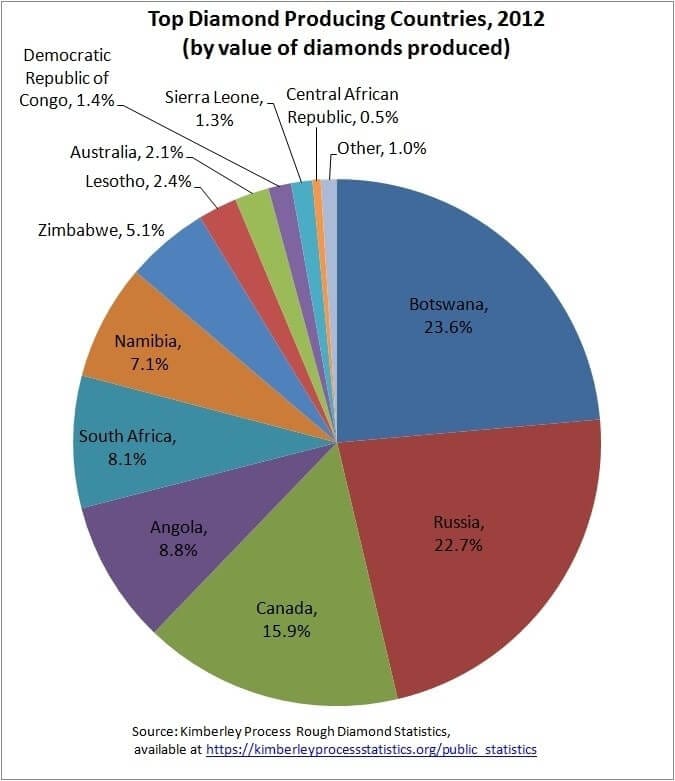A question I regularly get from my customers is “Where are these diamonds from?” My usual answer is that our diamonds are imported from Tel Aviv or from other major trading hubs around the world. DiamondNet is a family business and both my brother in-law and father in-law are supplying me directly from the Tel Aviv Diamond Exchange. That is the reason I am able to offer diamonds at such competitive prices because they come straight from the “source”. That is the first half of the answer.
I then tell my clients that the diamonds are in most cases from Africa because that’s simply where most diamonds are mined. But do I really know? The honest answer is no. And anybody who tells you he knows is most likely just making it up. It’s simply most likely that the diamond I am showing you is from Africa because of all the jewelry grade stones mined in the 25 countries around the globe over 50% are from African countries such as South Africa, Botswana, Angola and the Congo. Canada and Russia account for another 40%. The yearly output of Africa, Canada and Russia amounts to approximately 80 million carats of jewelry grade diamonds. That is a massive amount!
 Now, it is true that since the introduction of the Kimberly Process in 2003 all mined diamonds have to be accompanied by a certificate of origin indicating the actual location they were mined at. The Kimberley Process was established by United Nation General Assembly Resolution 55/56 in order to put an end to the entering of “conflict diamonds” into the rough diamond market. And by and large this does work. The problem is, however, that once the diamonds are polished and parceled by size and quality tracing back to the individual diamond’s origin is no longer possible. There is no regulation or even enough popular demand for diamond manufacturers to provide origin reports. And let’s be honest – most customers don’t really care too much either.
Now, it is true that since the introduction of the Kimberly Process in 2003 all mined diamonds have to be accompanied by a certificate of origin indicating the actual location they were mined at. The Kimberley Process was established by United Nation General Assembly Resolution 55/56 in order to put an end to the entering of “conflict diamonds” into the rough diamond market. And by and large this does work. The problem is, however, that once the diamonds are polished and parceled by size and quality tracing back to the individual diamond’s origin is no longer possible. There is no regulation or even enough popular demand for diamond manufacturers to provide origin reports. And let’s be honest – most customers don’t really care too much either.
Are your diamonds “blood diamonds”?
To the best of my knowledge they are not. The World Diamond Council has confirmed that the Kimberley Process has been a success. All participating countries are required to supply certification and guarantees that the diamonds they export are conflict-free. In today’s market 99% of all rough diamonds carry such certification. Before the introduction of the Kimberley Process approximately 15% of diamonds were “blood diamonds”. This number has been reduced to fewer than 5% since 2003.



